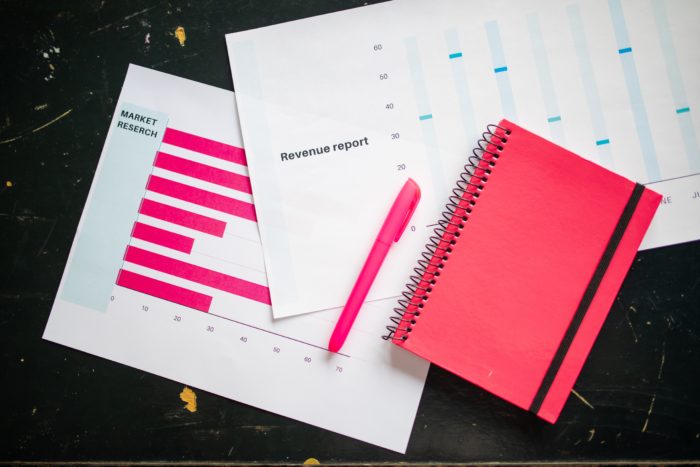One of the most important decisions you will make as a business is how to price your products.
No matter what part of the retail industry you’re in, how you price your products will have a direct effect on the success of your business. Customers can be extremely sensitive to prices, and often view price as one the main factors to consider when making purchases.
If your products are underpriced, not only will you lose out on potential profits, but shoppers may view your items as too cheap or unreliable. Price too high and customers could feel intimidated.
How to price your products is one of the most complex tasks and there are several factors to consider so that you can maintain a balance between product costs and effort, profit margin, and market demand.
There is no one-size-fits-all pricing strategy, you’ll need a plan that fits the specifics of your company.
How Should You Price Your Products?
A little Googling will show that there’s a lot of different advice out there about how you should price your products. It can understandably feel a little overwhelming, especially if it’s your first time.
Fortunately, it’s not a decision that you’re locked into forever.
When you’re looking for the right price for your product, you’ll likely try out several strategies and adapt as needed. There’s a wide variety of pricing strategies in the retail business. Picking the right one usually involves knowing and considering all your key factors, plus understanding the relationship that exists between the cost to make the product, quality, and price.
So, where do you start?
Step One: Know Your Pricing Strategy Options
Years of retail have allowed other businesses to pave the way and create profitable pricing strategies that you can choose from. Knowing which pricing models work best in your industry can streamline your journey toward pricing your own products and give you the confidence you need to make a decision.
There are three big ones to consider:
Cost-Plus Pricing
With cost-plus pricing, there’s a formula to help your business figure out its optimal prices.
First, add up the total cost of production for your product, including raw materials, labor costs, and overhead costs. Then, add a profit margin that’s ideal and lucrative for your business.
This model is simple and straightforward and allows you to ensure you are always making a profit on your products, but there are some drawbacks to keep in mind.
For example, the total cost of production for your products might change over time due to things like material shortages, or changes in supply, causing your profit margin to shrink, even on high-selling items. Customers will notice if you keep changing your prices to adapt to this, which could negatively impact your brand-shopper relationships.

Competitive Pricing
Also sometimes referred to as market-based pricing, this strategy works by comparing the prices of other similar products on the market and either setting your prices higher or lower than your competition.
There are three ways you can price your product using this strategy:
- Pricing above market – By pricing your products higher than the average market value, you are attempting to establish that your products are worth more or have a higher quality or value.
- Pricing at market – Copying the same prices as your competitors allows you to stay profitable and competitive but you run the risk of the customer focusing on other aspects rather than price to make their purchasing decisions, like packaging, familiarity, advertisements, etc.
- Pricing below market – Using the data you’ve gathered you can decide to price your products purposefully lower than your competition in an attempt to persuade customers toward your products.
Any of these choices can be profitable, but also have some drawbacks of their own. It’s important that you have all the right data before making your choice and have a clear understanding of how your product stacks up against competitor products’ quality and value. No matter what prices you set, you should be able to defend your reasoning.
Demand-Based Pricing
This strategy, also known as dynamic pricing, allows your prices to remain flexible, meaning that your prices will not stay permanently fixed and will adjust to meet current market demand.
For example, brands like Uber will charge a different price depending on the time of day, week, month, or year to match the current demand from riders. A ride at 2pm on a Tuesday in July will likely cost dramatically less than an 11pm ride on New Year’s Eve. Charging higher prices while there is higher demand for rides allows Uber to draw in more available drivers and mitigates the flood of riders demanding a car at the same time.
However, demand pricing can be a little more difficult for retailers because it requires your business to correctly predict what price will generate the most profit, while taking volume into consideration.
Staying aware of what else is going on in the market allows you to make informed decisions rather than moving blindly.
Step Two: Make Sure You Have All the Right Data
Before you can make the best pricing decision for your business, you need to gather all the necessary information. How can you make an informed decision without data?
Your Customers
The more you know and understand about your customers, the better you will be able to provide the value they need. Your customers are often the best indicators of what’s working and what could be improved on.
Conducting market research is essential when it comes to learning more about your customer base. This can include customer reviews, surveys, focus groups, buyer personas, competitive analyses, and more.
This research will give you insights into what competitors are doing and whether it’s working. It can also let you know if there is anything customers want that they aren’t getting.

Your Costs
It’s nearly impossible to price your products accurately without taking your costs into account. Knowing how much you have spent and adjusting your price along with it is how you ensure that you’re always making a profit.
Remember that your total costs include more than just the literal cost of materials. You must also consider overhead costs like labor, shipping fees, stocking fees, or advertising fees. All of these should be included in your calculated total costs.
Your Target Revenue
In order to get your product prices where you want them, consider what the ideal profit for your business would be like.
Once you have decided on that target amount, you’ll factor in your calculated total costs to come up with the ideal price point for your products. Then, estimate how many units you expect to sell over the course of a year.
Divide your target revenue by the projected number of units sold to get a price per product that will allow your business to reach target goals.
Your Competition
It’s always helpful to know what moves your competition is making in retail. Staying aware of what else is going on in the market allows you to make informed decisions rather than moving blindly.
Your customers are certainly going to be looking at the competition, whether it’s through advertisements or even their products on the shelf next to yours. So, it’s important that you know what they are seeing and experiencing so you can either match your competitors or do it even better.
There are key takeaways you should get from your competitor data:
- What sets your products apart from the competition?
- Do your products have comparable or higher quality?
- Are shoppers buying your products more than competitors’?
If there are key areas where your product clearly surpasses a competitor in value or quality, then you may be able to get away with higher prices.
Step Three: Experiment Until You Find What’s Right for You
Your pricing strategy is never truly set in stone. Don’t worry about getting locked into the first, second, or even third pricing strategy that you try using for your products. It’s not one-size-fits-all, and there’s always room for improvement.
There are a lot of factors that go into pricing, and often these factors don’t remain static—so your prices shouldn’t either. Allowing your prices to follow the market and fluctuate keeps your products competitive and drives continuous revenue.
Here are a few ways you should consider experimenting with your prices:
Markup Your Best-Sellers
If you have any products that are consistently selling and doing exceptionally well, consider experimenting with raising their prices.
Increasing prices will give you a revenue boost, possibly making up for any other products that aren’t selling as well.
This should be done after your products have already been on the market for a while and have gained a loyal customer base. If you have an online storefront, consider offering free shipping or other similar promotions to offset the increased prices.

Seasonal Discounts and Promotions
Seasonal promotions give shoppers an incentive to browse your products and possibly make purchases, especially during the holidays when customers are often actively in the market for gift items.
Altering your prices with the changing seasons can be a great way to boost revenue during the popular seasons and stay relevant during the off ones. But even more than that, customers often expect prices to go down during certain seasons, and most of your competitors will likely comply.
It only makes sense to follow suit so that your products don’t get lost in the hype of competitor discounts.
Follow the Market
Staying static with your prices can hurt you if you aren’t keeping up with market trends.
Factors like inflation, stock market prices, supply chain issues, employment rates, and more can all influence the prices that shoppers are willing and able to pay for your products. That’s why it’s important to stay informed about what is happening in the market.
Remember that your competitors will pay attention to these things as well, so acting fast can get your foot in the door ahead of the competition and win you more purchases.
Just make sure you are keeping your profit margins in mind as you lower your prices. It might increase sales for a short period of time, but you need to continuously meet your revenue goals.
Staying static with your prices can hurt you if you aren’t keeping up with market trends.
Step Four: Continuously Monitor Your Prices
You owe it to your business and your customers to stay on top of your prices. There are three things you should pay attention to when managing those price tags:
- Your Customers – Regularly check-in with your customer base to make sure they are happy and satisfied with your products and product prices.
- Your Competitors – Consider conducting regular competitive pricing analyses so you always have the insights that you need to make informed pricing decisions.
- Your Future – Keep your long-term revenue goals in mind with every pricing choice you make. Consider creating a quarterly or annual pricing schedule ahead of time that includes any seasonal promotions or discounts. This way, you know when to expect a boost or drop in sales and can plan accordingly.
Pricing a product can be complicated and complex, and requires a lot of skill, time, and effort.
Remember, your product prices could be the difference between a successful business or a failed one, so never be afraid to make changes until you’re satisfied with the results.














